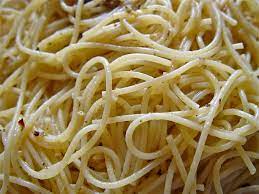No products in the cart.

Firstly, introducing Auscrops, a wonderful market vending company bridging farmers and customers together through market vendors. Click here to out find more about Spaghettini as well fruit and vegetable offers.
Spaghettini
Have you ever heard of spaghettini? This delicious Italian dish is a must-try for any pasta lover. But what exactly is it and how do you make it? Today, we’re going to explore the world of spaghettini, from its history to its preparation. Let’s get started!
What Is Spaghettini?
A type of pasta that originated in Italy. Similar to spaghetti but thinner, with an even narrower diameter than capellini or angel hair pasta. A light, delicate texture and best served with lighter sauces such as pesto, butter and garlic, or oil and herbs. Used in salads or cold dishes such as pastasalads.
How To Make Spaghettini
Making spaghettini at home is simple and quick. All you need are some fresh ingredients and about 15 minutes of your time! Here’s how to make it:
1. Bring a large pot of salted water to a boil on the stovetop.
2. Add the spaghettini to the boiling water and cook for 8-10 minutes until al dente (cooked but still slightly firm).
3. Once cooked, strain the pasta in a colander and rinse with cold water to stop the cooking process and keep it from sticking together.
4. Toss the cooked spaghettini with your favorite sauce or topping and serve! Pairs well with almost any sauce or topping, so feel free to get creative! For example, try tossing it with olive oil and freshly grated Parmigiano Reggiano cheese for an easy weeknight meal or serve it as part of a more elaborate seafood feast featuring shrimp scampi or clams casino!
Conclusion:
Finally, Is an Italian classic that deserves its place among other beloved pastas like spaghetti and fettuccine alfredo. With its thin diameter, delicate texture, and versatility in terms of toppings or sauces, this unique dish offers something special for every discerning pasta fan. We hope this introduction has inspired you to give spaghettini a try – buon appetito!
Click here to read similar articles.
 Français
Français 










